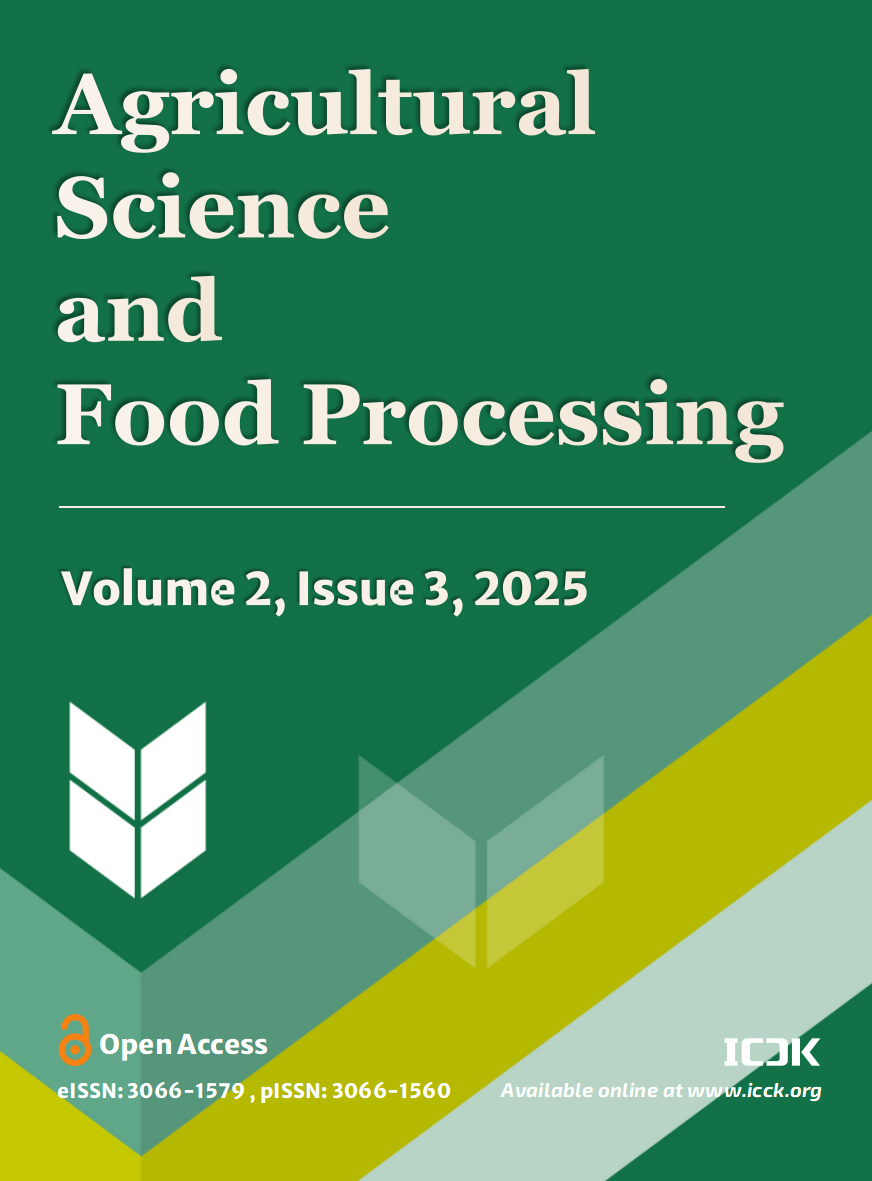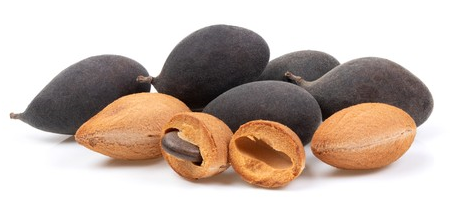Abstract
Modeling of physical properties and determination of the chemical composition of BTS were studied at 12.25% wet basis. Mass correlation with principal dimensions was modeled and evaluated using statistical parameters including chi-square ($\chi^2$), coefficient of determination (R$^2$), root mean square error (RMSE), and standard error (SE). Chemical properties were analyzed using standard techniques. Results showed mean values of seed mass, major, intermediate, and minor diameters of 0.18$\pm$0.02 g, 0.85$\pm$0.007 mm, 0.73$\pm$0.074 mm, and 0.38$\pm$0.046 mm, respectively. The seed was spherical (72.64%) with mean aspect ratio (1.17$\pm$0.124), ellipsoid ratio (2.27$\pm$0.31), and eccentricity (0.4768$\pm$0.16). The correlation of mass with intermediate diameter, and with the interaction of intermediate and minor diameters, produced the best non-linear regression models. The intermediate diameter model yielded the highest R² (98%) and lowest $\chi^2$ (2.4 $\times$ 10$^{-5}$). The interaction model achieved R² of 99% with the lowest RMSE (0.0032), $\chi^2$ (0.0029), and SE (1.04 $\times$ 10$^{-5}$) for predicting seed mass. Proximate and phytochemical compositions were not significantly different ($p>0.05$) from recommended levels by WHO and NAFDAC. This study provides a basis for developing standardized, cost-effective processing methods to enhance market value and ensure compliance with international quality standards.
Data Availability Statement
Data will be made available on request.
Funding
This work was supported without any funding.
Conflicts of Interest
The authors declare no conflicts of interest.
Ethical Approval and Consent to Participate
Not applicable.
Cite This Article
APA Style
Ehiem, J. C., Tosin, P., Igbozurike, A. O., Oduma, O., & Okoro, O. I. (2025). Modeling of Measured Physical Properties and Determination of Chemical Composition of Black Tamarind (Dialium Guineense) Seed. Agricultural Science and Food Processing, 2(3), 123–132. https://doi.org/10.62762/ASFP.2025.430476
Publisher's Note
ICCK stays neutral with regard to jurisdictional claims in published maps and institutional affiliations.
Rights and Permissions

Copyright © 2025 by the Author(s). Published by Institute of Central Computation and Knowledge. This article is an open access article distributed under the terms and conditions of the Creative Commons Attribution (CC BY) license (
https://creativecommons.org/licenses/by/4.0/), which permits use, sharing, adaptation, distribution and reproduction in any medium or format, as long as you give appropriate credit to the original author(s) and the source, provide a link to the Creative Commons licence, and indicate if changes were made.


 Submit Manuscript
Edit a Special Issue
Submit Manuscript
Edit a Special Issue

 Copyright © 2025 by the Author(s). Published by Institute of Central Computation and Knowledge. This article is an open access article distributed under the terms and conditions of the Creative Commons Attribution (CC BY) license (https://creativecommons.org/licenses/by/4.0/), which permits use, sharing, adaptation, distribution and reproduction in any medium or format, as long as you give appropriate credit to the original author(s) and the source, provide a link to the Creative Commons licence, and indicate if changes were made.
Copyright © 2025 by the Author(s). Published by Institute of Central Computation and Knowledge. This article is an open access article distributed under the terms and conditions of the Creative Commons Attribution (CC BY) license (https://creativecommons.org/licenses/by/4.0/), which permits use, sharing, adaptation, distribution and reproduction in any medium or format, as long as you give appropriate credit to the original author(s) and the source, provide a link to the Creative Commons licence, and indicate if changes were made. 